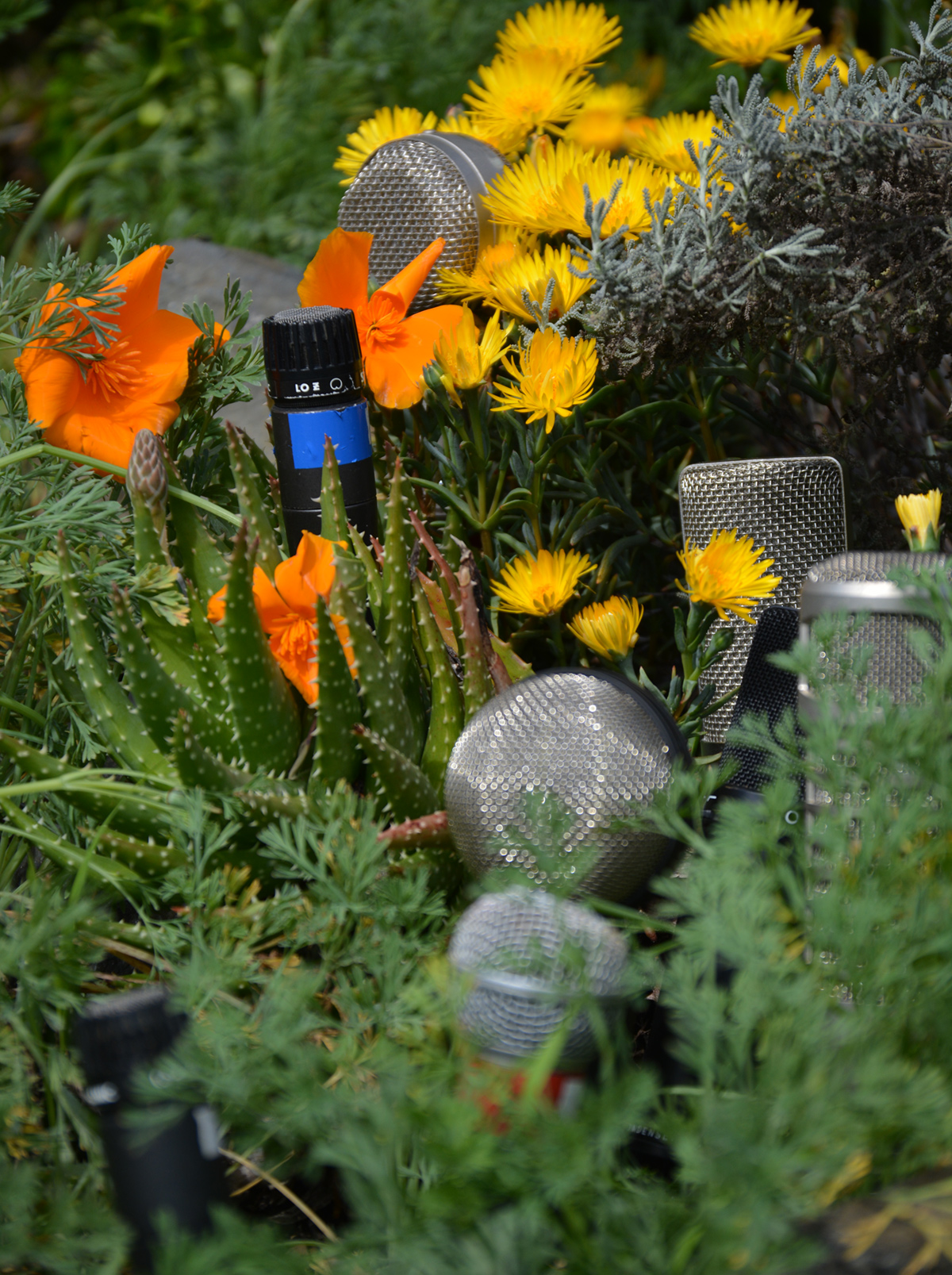One of the last things I think about when hearing the term "broadcast mic" is actual broadcast application. I have never done a podcast or worked at a radio station. Broadcast mics are typically large-diaphragm dynamic mics, tailor-made for announcers and DJs. They have extra shielding and are typically cardioid or hypercardioid, with good rejection in the null of the pattern. Additionally, they're designed to deepen the voice while maintaining speech intelligibility. The Shure SM7 and Electro-Voice RE20 are now classic versions of this type and have been joined by the likes of newer mics from Heil Sound, RØDE, and others. Broadcast mics can handle high SPLs with integrity, and their aforementioned emphasis on intelligibility can work well in all sorts of situations. They're ideal for kick drums, loud vocals, horns, and even guitar and bass cabinets.
I first encountered the large-diaphragm dynamic mic at Studio X in Seattle, in between Pearl Jam studio dates. An SM7 was set up as a vocal mic next to a Neumann M 49 for Eddie's vocals. Engineer Sam Hofstedt espoused the SM7's virtues to me, and with a little investigation, I found that broadcast mics were a frequent choice for all types of vocal recordings, from screamo to hip-hop. But this review is not about the SM7 or RE20. It is about the recently released Audio-Technica BP40.
On looks alone, you'd swear the BP40 was the lovechild of both the aforementioned mics. It is about the same length and gun- metal black/gray color as an SM7, with the signature venting of the RE20. Paraphrasing the manufacturer: The BP40 is a large- diaphragm dynamic mic with a hypercardioid polar pattern. Its humbucking voice coil eliminates electromagnetic interference, and its pronounced peak at 4 kHz makes for excellent vocal presence, even at a distance. It has a multistage windscreen and a switchable 100 Hz high-pass filter for rumble and plosive attenuation. Its claimed frequency response is 50 Hz to 16 kHz. My translation for studio use: I like the mic's tone. It has nice intelligibility with a little presence bump. There is also a rich thickness that can be great for use on female belters or any source that's sounding thin.
The first place I thought to use the BP40 was on vocals. It had a big, firm, no-nonsense sound that worked well. I wasn't expecting it to give me the depth, presence, or intimacy that an expensive condenser mic can, but in many situations (e.g., loud rock singer, or singer with poor mic technique) a broadcast mic can lead you to a better end result for what you are doing. The BP40 was also solid on a hip-hop track that had both rapping and singing. It held up quite nicely in both scenarios, and although each track was EQ'd and treated differently, the source material the mic captured in both situations was solid. The BP40 also worked great on loud electric guitars, kick drums, toms, and bass cabs. I have always sort of seen this type of mic as an SM57 on steroids — just a little meatier when you want it to be, but useful in many of the same sorts of situations.
One difference between the BP40 and its predecessors is that this mic has good output level. Those of you familiar with an SM7 know how quiet it is. You really need a preamp with some serious gain to get its output up to reasonable recording levels. Not so with the BP40. It has plenty of output, which means you can use it with pretty much any mic preamp, including the ones inside bus-powered USB interfaces. Moreover, I was able to dial in a greater variety of tones with the BP40 by using the gain and output levels of my outboard preamps to achieve a broader palette of colors.
Okay, so to be thorough, I did test the mic for broadcast-style speech, putting on my best Robert Siegel impersonation: "This is All Things Considered, I'm Robert Siegel..." I was routed straight into a Burl B1D preamp, and as a flavor option, I also tried an API 512c, both with no EQ. The resulting tone of my voice was balanced, rich, and full. The 4 kHz bump does increase clarity, helping the voice cut through. The mic has that "radio" sound, with lots of body, especially on my low voice. I avoided talking right up on it to keep plosives to a minimum, and it maintained its commanding richness even when I positioned myself off the mic a bit. I think using this in a strictly broadcast-type situation, you can run sans EQ and achieve a very workable tone by adjusting proximity to the mic. Or in other words, use your ears, and your golden-throated radio-god voice will follow.
Every studio worth its salt will have a large-diaphragm dynamic broadcast mic around. I find this type to be an excellent utility option for a variety of uses. The Audio-Technica BP40 is a fine choice for many studio recording duties, and of course, it is a great choice for taking your podcast production values to the next level. A threaded mounting clamp and a soft protective pouch are included with the mic, and an optional shockmount (AT8484) is available.




_disp_horizontal_bw.jpg)